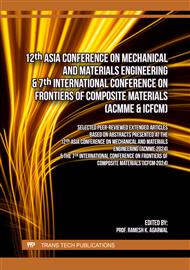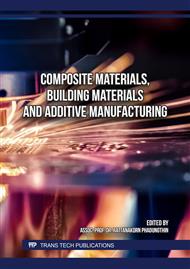p.29
p.41
p.49
p.61
p.67
p.75
p.85
p.99
p.109
An Experimental Study on the Effect of Nano Zinc Oxide on Reflective Coatings and Building Roof Temperatures
Abstract:
Most roofs on Earth are made of dark materials. Dark roof surfaces can retain heat better than light ones; in Iraq, summer time temperatures on the roofs of dark buildings reached 70–80 degrees Celsius in July and August. The effects of this temperature rise are detrimental to cooling and energy consumption. To lessen heat transfer into the building, use reflective surfaces that can reflect infrared radiation waves. Cool roofs have both short-term and long-term advantages. They can reduce a building's annual air conditioning energy consumption by up to 15%, extend the life of the roof and its service life, improve the energy efficiency of roofs particularly those with inadequate insulation at the front of the roof improve thermal comfort in buildings without air conditioning, and lower greenhouse gas emissions and air pollution. Solar heat is one of the main factors affecting the durability of roofing membranes, according to research and real-world experience with the deterioration of these materials over time. High solar reflectance materials can reflect more sunlight and maintain their coolness in the sun. This study examines a low-cost composite cool coating that uses 60% calcium carbonate and demonstrates a 15°C drop in surface concrete temperature for roof buildings when compared to an uncoated surface. Additionally, compared to 30%wt CaCO3, the effect of 60%CaCO3 in composite coating reduces adhesion strength. According to the study, the weight of CaCO3 in the composite coating increases while adhesion strength, surface roughness, and particle homogeneity distribution decrease. Conversely, the maximum weight of CaCO360% weight percent exhibits good IR reflectance and less tribological properties. While preserving good infrared reflectance, adding 10% ZnO to the coating solution (60% CaCO3/PVac) improves tribological properties. The adhesion strength of the 60% calcium carbonate polymer composite paint increased from 10.9 MPa to 40.2 MPa when the nanomaterial was present, while this material maintained the superior optical qualities of infrared reflection. The coefficient of thermal expansion varies between concrete and coating solutions. For instance, the coating that has 10% weight added ZnO has a peel resistance coefficient of 8*10-6 1/K. The 60%CaCO3/10%ZnO/PVac coating effectively lowers the temperature by 15–12 °C when applied to a building roof.
Info:
Periodical:
Pages:
109-118
Citation:
Online since:
November 2024
Authors:
Keywords:
Price:
Сopyright:
© 2024 Trans Tech Publications Ltd. All Rights Reserved
Share:
Citation:



